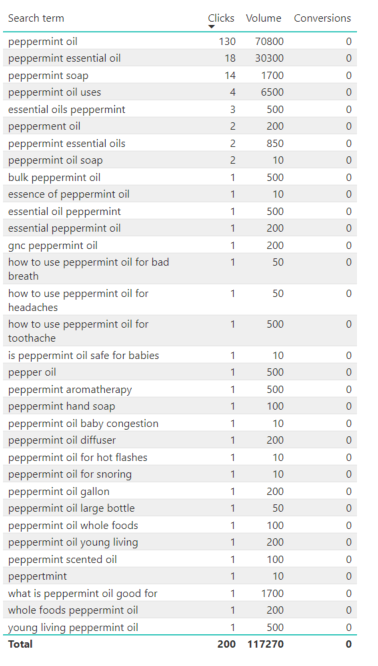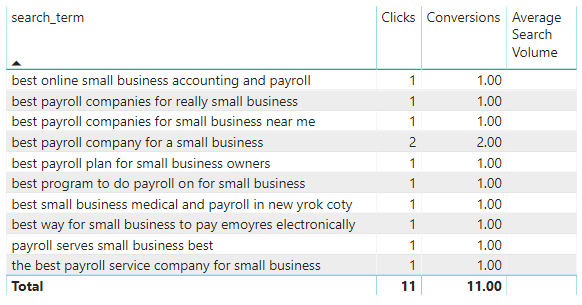To celebrate a new year and a new decade, let’s take a brief look at how search results have progressed over the past 10 years:
2010

2020

An entire decade has passed between these two images.
During this time, we've seen self-driving cars, wearable tech, Uber, the iPad, and Instagram.
Scientists have captured the first image of a black hole.
White Claws are a thing.
And with all of the above, we’ve seen Google shift from merely a search engine to a machine-learning robot with natural language process skills.
Meanwhile, in the world of online marketing...
we're still using ~mOnThLy SeArcH vOlUmE~.
TEN. YEARS. LATER.
Despite the fact that Google has incorporated wildly advanced updates over the past decade, the search marketing circus hasn’t moved on from opening ~gOoGle’s kEyWoRd PlAnNeR~ every damn day.
To stress this further, here are the things I did in 2010 that would be weird if I did them in 2020:
- Browse on Internet Explorer (RIP)
- Call a cab
- Mail my DVD back to Netflix
If you'd feel like the Flinstones doing the above in 2020, why are you still relying on an outdated metric, like Monthly Search Volume, to drive your digital marketing?
If this sounds like this is a scolding, it is.
You were warned in 2016, and not once, but twice, in 2018.
We've preached it at conferences, too.

Yet, MSV, like a good ol’ flip phone, remains indestructible.
MSV acts as a warm blanket for anyone wanting a marketing strategy, without needing more brainpower than a potato: find the topics with the most search volume, add the keywords to your content, bid on the terms, run the ads, and voila - done. ✔️
- MSV isn’t a small business problem. Fortune 50 companies across the globe are still relying on this misleading metric every day to determine where to spend billions across Google & Bing.
- Which, by our calculations, totals upwards of $14.5 Billion in irrelevant ad spend.
- It’s being used to build out pages & pages of junk content to drive “visibility” and “brand awareness,” that we’re all subjected to on your blog.
- And MSV has also been the number one driver of the ancient fallacy that getting a lot of traffic means your marketing worked (and leads to the inevitable abuse of the phrase “brand awareness").
Simply put, Monthly Search Volume is a metric that drives decisions based only on the potential for traffic, with zero regard for the potential for revenue.
Unless you can pay your bills in visits, this ain’t it chief.
MSV: Use it, but use it cautiously
Am I saying don’t use Monthly Search Volume, at all, ever? No, not necessarily.
Can you still use it directionally? Sure.
Can you still use a map from 1995 “directionally” for your next road trip? Sure.
Good luck. You might get where you’re going (it might take longer) or, you might end up in a Netflix documentary.
The same idea applies to MSV and Keyword Planner.
They can be useful, however, as an industry, we’ve been abusing them as a single, independent source of truth without any thought to other data sets (real pitfall examples ahead!).
...abusing MSV as a single, independent source of truth...
So, feel free to use MSV; but take it all with a grain of salt, save your valuable marketing lettuce 💲, and for the love of God, please don't base your entire marketing strategy on it.
Outside of MSV: Get Rid of the Junk!
OK, so which tools and metrics should I use instead?
From click data to conversion data, PPC metrics put ‘traditional SEO data’ to shame.
Here’s what I mean.
In 2010, if I were selling peppermint essential oils, I would have built out tons of content and bid on these terms based on their search volume alone.

With paid data in 2020, I can see they don’t directly convert and I save myself valuable time and resources by not trying to rank for these keywords.
Outside of MSV: Discover Conversion Intent
On the flip side, let’s say it’s 2010 and I’m offering payroll services.
Using MSV, I would have prioritized my organic and paid strategies based on only major, high-volume head terms.

Each one of these terms generates one, maybe two clicks each, but they offer major advantages because they:
- convert at much higher rates (we’re talking each click often a direct conversion, people!)
- are way less competitive to go after via paid, or to rank for organically
- in aggregate, generate a large amount of conversions
So, Are you Saying I Should Pay for Data Collection Through Paid Search?
Yes. That’s exactly what I’m saying.
And, once you get that valuable data, you can optimize using it, and eventually get that converting traffic organically for free, making back what you paid for it and then some.
We have no shame and have done this very thing! We’ve run brief, focused, paid search campaigns purely for the purpose of data collection to better optimize for SEO.
After all, isn’t ROI the name of the game?
What if I Don’t Have Those Kinds of Resources? I’m Not Made of Money
That’s OK, too. The whole idea is to broaden our data horizons, people!
There are more resources to come, but in addition to using paid search data for keyword research, other great data sets we’ve had success with, that you can use to validate Monthly Search Volume and/or layer into your strategy include:
- Search Console Data: to cross-reference Clicks and Impressions with MSV
- Audience Research: such as customer interviews, customer reviews & forum scraping (webinar on the way!)
- Site Search Data: to see how your users seek out certain content topics, and how that may contrast with demand data
- Back-end Lead Data: to see the vernacular your qualified vs. unqualified leads use in form fills
Lastly, as an industry, search marketing is still struggling to be taken seriously, 10 years later. If we don’t advance how we approach search marketing, how can we expect to be?
Cheers to upping our game in this new decade.
Want to learn more about how to leverage paid data in your search marketing strategy? Sign up for the Seer newsletter for more tutorials and cross-divisional strategies.


